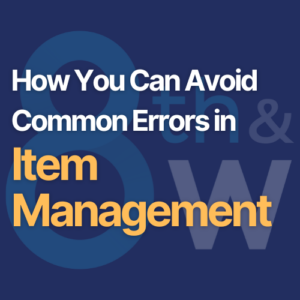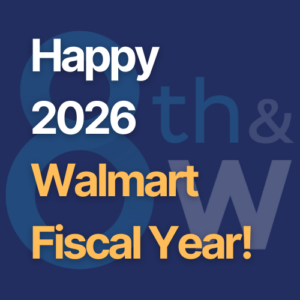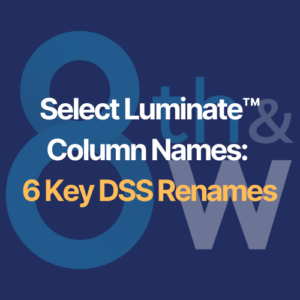Retailers depend on their suppliers to innovate new ways of saving time and money in the supply chain. A major focus in recent years has been on saving time at the store level to get product on the shelf faster and more efficiently.
What started in a few categories and for select annual events is quickly becoming a retail norm: retail ready packaging (RRP). Suppliers using retail ready packaging are saving their retailers time, payroll dollars, shelf space, and helping with inventory levels.
What Is Retail Ready Packaging?
Retail ready packaging (or shelf ready packaging) refers to a box, tray, sleeve, bin, or other display that product is shipped in that can be set on the shelf upon arrival at a store. This product does not have to be removed from its container to be placed on the shelf. The container it is shipped in serves as a display unit for the merchandise.
RRP Packaging Requirements
When a supplier decides to invest in retail ready packaging, there is more to consider than simply the container dimensions. The Institute of Grocery Distribution created guidelines that specify retail ready packaging should be:
Easy to identify: Although the product arrives at the store ready for the shelf, excess inventory may still sit in containers in a crowded backroom. When the time comes to restock the shelf, the case should be easily identifiable by the store staff. This will save time in finding the product and getting it on the floor for sale. The product brand and other identifying qualities should be on the package.
Easy to open: Once the product is moved from the backroom to the shelf, opening the display packaging needs to be seamless. Retail ready packaging that does not require box cutters or scissors to open saves time and has the items on display faster.
Easy to replenish: When items are displayed without retail ready packaging, replenishment can take up valuable time. Stocking one item at a time on the shelf, in the case, or on a hook is not an efficient use of payroll dollars. Retail ready packaging allows the store employee to easily restock multiple items in a single act with as little item interaction as necessary.
Easy to shop: The goal is not to just make retail ready packaging a benefit for the retailer, but for the customer as well! The packaging should allow the customer easy access to the product. In some cases, the packaging may include product details, pricing, and additional marketing.
Easy to remove or recycle: Once the retail ready packaging display unit has been sold through, it needs to be simple to remove so the next unit can take its place quickly. Whether the container is to be thrown out, recycled, or returned to the supplier should be clearly communicated on the packaging.
Types of Shelf-Ready Packaging
There are many different shelf-ready packaging solutions for the various retail categories. The most often used designs include:
Shelf Trays
Shelf trays are usually made of corrugated cardboard. They are pre-filled with product and set directly on the retail shelf. A perforated cover encloses the unit in transit and then is easily removed at the store for display.
Reusable Plastic Trays
Not all retail ready packaging has to be thrown away or recycled after the stock runs out. Some packaging is made from re-usable materials like plastic. These displays can be re-used by the store to cut down on waste. In some instances, they can also be returned to the supplier.
Merchandising Units
Merchandising units are a form of retail ready packaging away from the shelf. These are features and display units that are free-standing, normally placed in Action Alley for impulse purchases. The complete unit comes stocked with one or many types of items. Seasonal events from Back-to-School to Holiday gift-giving are supported with merchandising units.
Benefits of Retail Ready Packaging
From leaving the warehouse to entering the shelf, the benefits of retail ready packaging can be found all throughout the supply chain:
Eliminates Packing Waste
Retail ready packaging requires the supplier to ship their items as they wish to have them displayed on the shelf. When shipping individual items to be set loosely, extra material is needed (cardboard, foam, plastic, etc.) to keep the items safe in transit.
RRP displays factor shipment into the design of the display. There is no need for extra waste to keep the product safe. It all becomes part of the end product.
Stores Time and Payroll Savings
Taking an entire product display from the backroom to the shelf saves time. Store employees no longer need to set individual items on a shelf or peg hook. Their time can be better spent in other ways, which is savings put back in the payroll budget.
Provides Marketing at the Shelf
Your product is most likely sitting next to your competitor. The RRP gives you an opportunity to engage the customer at the shelf with creative designs, extra product information, and bonus signage to make your item stand out. This added marketing tool is ideal for product launches and attracting new customers.
Prevents Out-of-Stocks
Companies that develop RRP continue to innovate. Some displays, particularly stand-alone floor displays, come equipped with compartments for safety stock. The display can be replenished on the salesfloor without the store employee having to make a trip to the backroom.
RRP at Walmart
Like other big box retailers, Walmart makes good use of retail ready packaging. When Walmart first began using RRP, it popularized the term PDQ (Pretty Darn Quick) display. This meant the store associate could replenish shelves “pretty darn quick” with this new packaging.
Whether they are labeled PDQ, RRP, or SRP, they can be found all over a Walmart store. Shelf ready boxes of impulse candy are at most front registers. Select Health and Beauty items arrive pre-packed in display trays. Holiday candy arrives in decorative shelf ready boxes for the seasonal aisle.
With seasonal items, particularly seasonal impulse buy items, Walmart invests in merchandising units in its Action Alley. Walmart store associates know these units internally as seasonal trains. Seasonal trains are long units divided into separate bins. They arrive at the Walmart store pre-packed with display items for the seasonal event.
For example, the Back-to-School display train is set in Action Alley in front of Stationery and Office Supplies. The bins are filled with impulse items needed for the Back-to-School list (pencil packs, glue, erasers, locker accessories, highlighters, markers, etc.).
Seasonal trains can be found in various categories at Walmart, from hardware to electronics. In most cases, it is a group of different suppliers providing product for a single train.
Conclusion
Suppliers investing in retail ready packaging can expect to save money in their supply chain and grow sales at the store level. When done correctly, retail ready packaging takes the burden off the store employee and creates an opportunity to have less product lost and waiting in a backroom.
To learn more about Walmart packaging guidelines and best practices, contact 8th & Walton for a free consultation.




